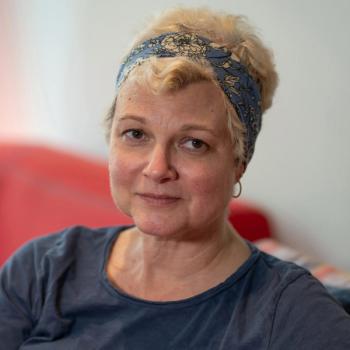
- GI Special Issue
- Volume 1
- Issue 1
Looking Beneath the Surface in Colorectal Cancer
An expert discusses genetic profiling and other advances in the treatment of colorectal cancer.
For anyone who has received a diagnosis of colorectal cancer (CRC), it’s crucial to ask for testing to determine the tumor’s genetic mutations or other aberrations.
That’s because CRC is a very heterogeneous group of cancers, meaning it differs greatly among patients. Testing allows for individualized therapy by helping to inform doctors about which drugs to use and which to avoid.
The many subsets of CRC include those with and without the BRAF and RAS family of mutations. Then there are CRCs that overexpress the protein HER2, which helps drive the cancer. Another crucial aberration: mismatch-repair deficiency or microsatellite instability (MSI)-high status. This means that the cancer has trouble repairing its own DNA when damaged; over time, these tumors develop a large number of mutations that render them sensitive to immunotherapy. Although a type of immunotherapy known as immune checkpoint blockade does not work for all CRCs, mismatch-repair/MSI-high tumors are more sensitive to it, and this subset has a Food and Drug Administration (FDA)-approved treatment.
Previously, some of these mutations were only useful in determining prognosis. Now, there are treatment options for patients with BRAF V600E gene mutations and also those with NTRK gene fusions, and clinical trials are testing anti-HER2 drugs, according to Pashtoon M. Kasi, M.D., M.B.B.S., M.S., an assistant professor of oncology and medi­cine at the University of Iowa. “We’re increasingly moving toward individualizing therapy for each patient,” he said.
In practice, genetic testing of these patients typically involves sampling and analyzing tumor tissue in a standard biopsy procedure. But liquid biopsies, which test blood for circulating tumor DNA, are increasingly used both in clinical trials and in practice and are expected to play a growing role in guiding treatment for people with CRC. Already, liquid biopsies are helping to identify both clini­cally relevant mutations and changes that happen over time, which can direct future treatment decisions, Kasi said.
In an interview with OncLive®, a sister publication of CURE®, Kasi discussed the potential for liquid biopsies and provided an overview of treatment advances being made for CRC based on the molecular makeup of tumors.
OncLive®: Where do liquid biopsies stand in CRC?
Kasi: Liquid biopsies, or circulating tumor DNA testing, have rapidly made their way into research and now into practice. The most recent guidelines, issued by a panel of experts from the American Society of Clinical Oncology and the College of American Pathologists in March 2018, summarized the promising ongoing research and studies on circulating tumor DNA. However, they’re not ready for prime time: The only FDA-approved indication for liquid biopsies is in the sphere of lung cancer.
Still, if you look at all the papers and abstracts that came from the 2018 American Society of Clinical Oncology Annual Meeting and now the 2019 ASCO Gastrointestinal Cancers Symposium, there is a great enthusiasm for the approach because of its sensitivity and specificity — at least in the metastatic setting. For early-stage cancers, it’s still early in research. In the metastatic setting in CRC, these biopsies are able to pick up the presence of all the relevant mutations — BRAF V600E and non-V600E, RAS family or its absence, as well as HER2, which can be present at base line or acquired. Additionally, these assays are now reporting on microsatellite instability.
Employing liquid biopsies as part of practice to help complement tissue-based testing is useful and practical in many ways. First, often we see patients whose tissue biopsy is not available. Next, it is not uncommon to encounter situations where tissue biopsy is not sufficient or safe to be done or repeated. Additionally, we know that these tumors, while on therapy, especially targeted therapies, evolve and change over time, explaining why these treatments may stop working.
Specifically, liquid biopsies help us identify tumors that initially don’t have RAS or EGFR mutations or HER2 or MET amplifications but acquire them during treatment. Those are things you can pick up on a liquid biopsy that you wouldn’t be able to pick up on tissue testing. That’s because a standard biopsy is done at the outset of treatment, and it’s not feasible to do these again and again. Liquid biopsies, on the other hand, are noninvasive blood tests and, therefore, can be repeated periodically as treatment progresses.
It is also important to know that not all actionable aberrations are detected by all assays and that the timing of circulating tumor DNA testing is key. Ideally, for patients with metastatic CRC, doing a liquid biopsy at base line when they have not begun treatment is the most informa­tive and reliable time. It also serves as a base line with which to compare results down the line.
Could you elaborate on ongoing research efforts in this area?
One of the most exciting things, in terms of using this approach in the metastatic setting, is clinical trials. One of them is a master protocol called COLOMATE (NCT03765736), or Colorectal Cancer Liquid Biopsy Screening Protocol for Molecularly Assigned Therapy, where each treatment arm may be determined by the patient’s liquid biopsy results. The study is being led by many academic institutions, with each arm being a separate clinical trial.
As of right now, different arms, or testing groups, are being developed based on the aberration found in each patient. We already have the HER2 arm open (NCT03043313), where tucatinib (ONT-380) and Herceptin (trastuzumab) (a kinase inhibitor and an antibody, respec­tively, that work in different ways to inhibit the activity of the HER2 protein) will be given together to patients based on HER2 amplification detected in circulating-tumor DNA testing.
Other ongoing research, more for patients with stage 2 or stage 3 CRC, involves the use of liquid biopsies to determine which patients will benefit from chemotherapy after surgery and which may not need it. However, the sensitivity of these assays has to be very high, since the stakes are a lot higher in the curative-intent setting for earlier-stage patients.
Are there other ways that under­standing gene mutations can be used to guide treatment?
Pharmacogenomics — or genetic testing of the indi­vidual, not the tumor — is underused in CRC patients; it can guide treatment dosing and adjustment based on variations in genes that affect the metabolism of various drugs. Historical analyses have shown that some patients do far worse in terms of side effects when they get chemo­therapy because they harbor an aberration in certain genes. One of the barriers is that it’s underestimated how many patients have these aberrations.
Additionally, previously there was a delay — usually weeks — in getting back some of these results. We have shown that incorporating this testing into practice is feasible. Now you can get the results back within three to five days and make a treatment decision in real time.
The other barrier was figuring out how to interpret these results. Now there are guidelines available from Clinical Pharmacogenetics Implementation Consortium that tell you how much chemotherapy should be considered if a patient has an aberration in a certain metabolism gene.
By using pharmacogenomics testing preemptively rather than reactively, we could avoid severe side effects in patients. For patients with CRC and other gastrointestinal cancers, it is particularly of value since the genes that metabolize the two most commonly used chemotherapies are already known and well described. It’s going to help bridge that gap in terms of individualizing care. That will be very helpful, because chemotherapy is still the mainstay for first-line therapy and beyond for all of our patients. To be able to give them treatment in a way that is safer and more tolerable without compromising efficacy would affect the care of these patients.
Could you discuss the BEACON trial?
The BEACON CRC trial is one of the most exciting trials that we had updates for at the 2019 American Society of Clinical Oncology Gastrointestinal Cancers Symposium. It is focused on patients with BRAF V600E-mutated CRC and is led by Scott Kopetz, M.D., Ph.D., FACP, of The University of Texas MD Anderson Cancer Center, and Axel Grothey, M.D., of West Cancer Center. These patients represent an unmet need; their survival in the second-line setting or beyond is about four to six months. Outcomes in these patients are up to three times worse than those of patients who don’t have the BRAF V600E mutation. Historically, BRAF inhibitors didn’t work. The combination of BRAF inhibitors with MEK inhibitors did not show much promise, either.
Those efforts showed that we had to block the cell-signaling pathway at three levels due to the upregulation of the protein EGFR and overac­tivation of that pathway. Doing so with the BRAF protein inhibitor Braftovi (encorafenib), MEK inhib­itor Mektovi (binimetinib) and the anti-EGFR monoclonal antibody Erbitux (cetux­imab) has demonstrated remarkable results. The median estimated overall survival is now around 15 months, and about 48 percent of patients with BRAF V600E-mutated CRC responded to the regimen. In this subset, even stable disease is an important clinical end point, because these patients would otherwise die of their disease. Even the progression-free survival (the time from first treatment until disease progression) is outperforming some of the historical overall survival rates.
Many patients who respond tend to show (relatively long-lasting) responses, and the regimen is well-tolerated. It received an FDA breakthrough therapy designation (to speed development) in August 2018 for the treatment of patients with metastatic BRAF V600E-mutant metastatic CRC after one or two lines of treatment. Hopefully, this will become an option this year. A sister trial, ANCHOR, will evaluate for the use of the combination in the first-line setting.
What is the ongoing research in the HER2 space?
One of the key advances in CRC is looking at these aberra­tions at base line and what happens to these tumors over time. One of the classic examples is the evolving recognition of HER2-positive CRC. At base line, it confers resistance to some anti-EGFR therapies. It’s not part of guidelines yet, but HER2 may be another aspect to check for in patients before considering anti-EGFR therapies. If found, we may not consider an anti-EGFR therapy for them. HER2 can also be an acquired mechanism of resistance; you can pick it up later either through liquid biopsy or tissue testing. For those 3 to 4 percent of patients, you can enroll them in anti-HER2- based therapy trials.
Data with the anti- HER2 and EGFR drug Tykerb (lapatinib) and the anti-HER2 monoclonal antibody Herceptin (trastuzumab) look promising. There are data and ongoing trials with the dual anti-HER2 blockade that combines Herceptin and another HER2-targeting antibody, Perjeta (pertuzumab). These are studies where it is important to know HER2 status at base line and also at progression so that we can pick the right trials for patients. It won’t be long before a biologic becomes available for these patients, in addition to anti-VEGF and anti-EGFR agents. Antibody-drug conjugates such as trastuzumab deruxtecan (DS-8201), which links an anti-HER2 drug to a chemotherapy, are also being used to treat CRCs with HER2 expression; a trial of this conjugate (NCT03384940) is in progress. Meanwhile, the MOUNTAINEER study (NCT03043313) of tucatinib (ONT-380) and Herceptin employs the addition of a novel small-molecule HER2 inhibitor and is also open and (accepting patients).
Articles in this issue
over 6 years ago
Anticipating Treatment's Side Effects Can Help Alleviate Themover 6 years ago
After Surgery, Lonsurf Remains Helpful in Gastric Cancerover 6 years ago
BRAF V600E-Mutated Cholangiocarcinoma Responds to Drug Combo




